Abstract
DL-8280, 9-fluoro-3-methyl-10-(4-methyl-1-piperazinyl)-7-oxo-2,3-dihydro-7H- pyrido-(1,2,3-de)1,4-benzoxazine-6-carboxylic acid, is a new nalidixic acid analog with a broad spectrum of antibacterial activity against gram-negative and gram-positive bacteria, including obligate anaerobes. The activity of DL-8280 against Enterobacteriaceae, Pseudomonas aeruginosa, Haemophilus influenzae, Neisseria gonorrhoeae, and Clostridium perfringens was roughly comparable to that of norfloxacin and far exceeded that of pipemidic acid and nalidixic acid. DL-8280 had greater activity against Staphylococcus spp., Streptococcus spp., Pseudomonas maltophilia, Acinetobacter spp., and Bacteroides fragilis than did norfloxacin, pipemidic acid, and nalidixic acid. Nalidixic acid-resistant Enterobacteriaceae, ampicillin-resistant gonococci, and clindamycin-resistant obligate anaerobes were also susceptible to DL-8280. The activity of DL-8280 was affected very little by inoculum size, and its action was bactericidal at two times the minimal inhibitory concentrations at most. Administered orally to mice experimentally infected with Staphylococcus aureus, Streptococcus pyogenes, Escherichia coli, Proteus mirabilis, Serratia marcescens, or P. aeruginosa, DL-8280 was 2 to 7 times more effective than norfloxacin and 7 to more than 50 times more active than pipemidic acid.
Full text
PDF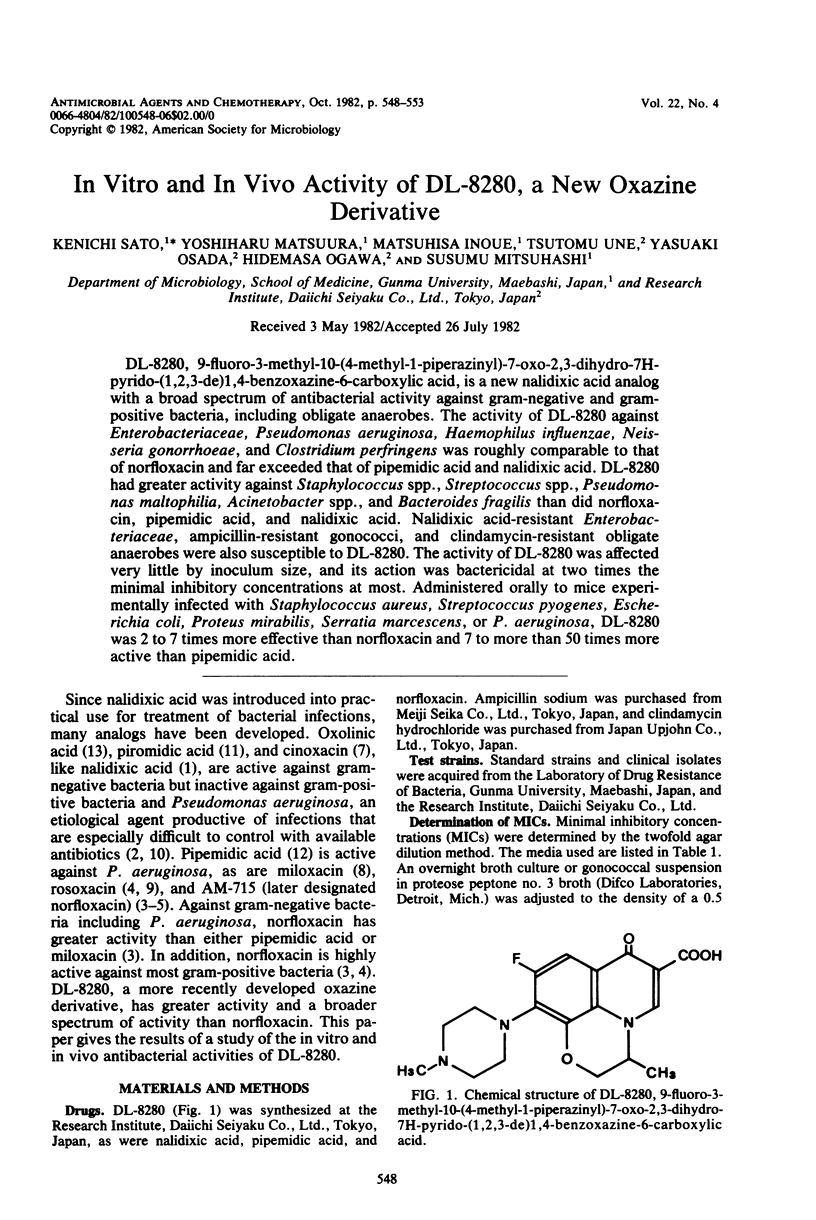
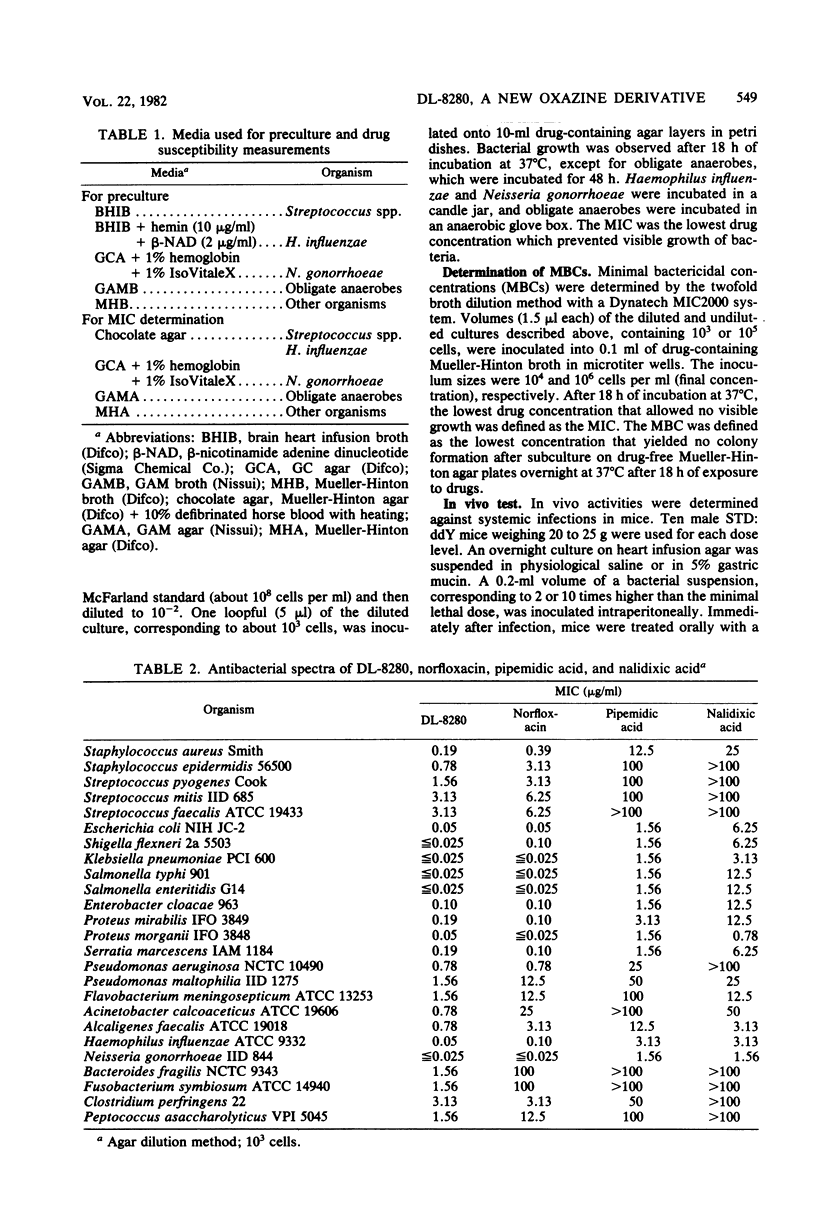
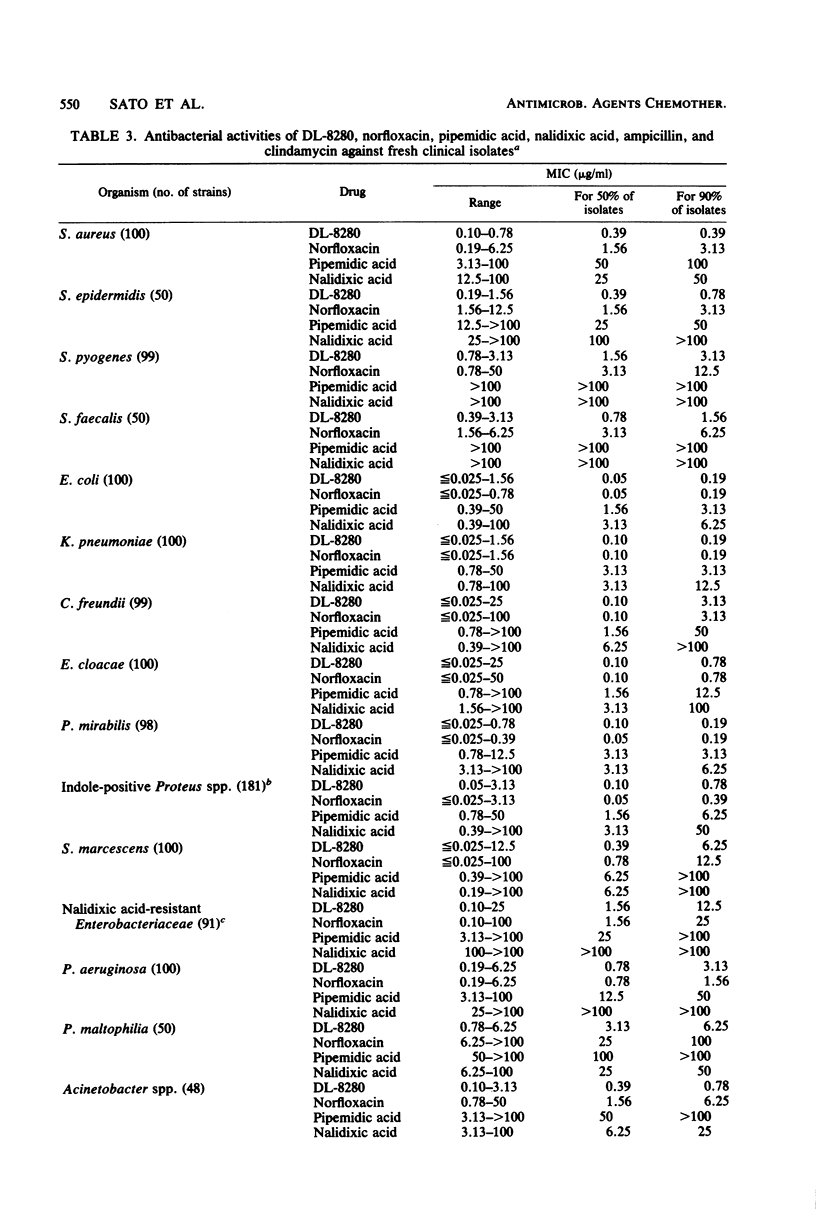
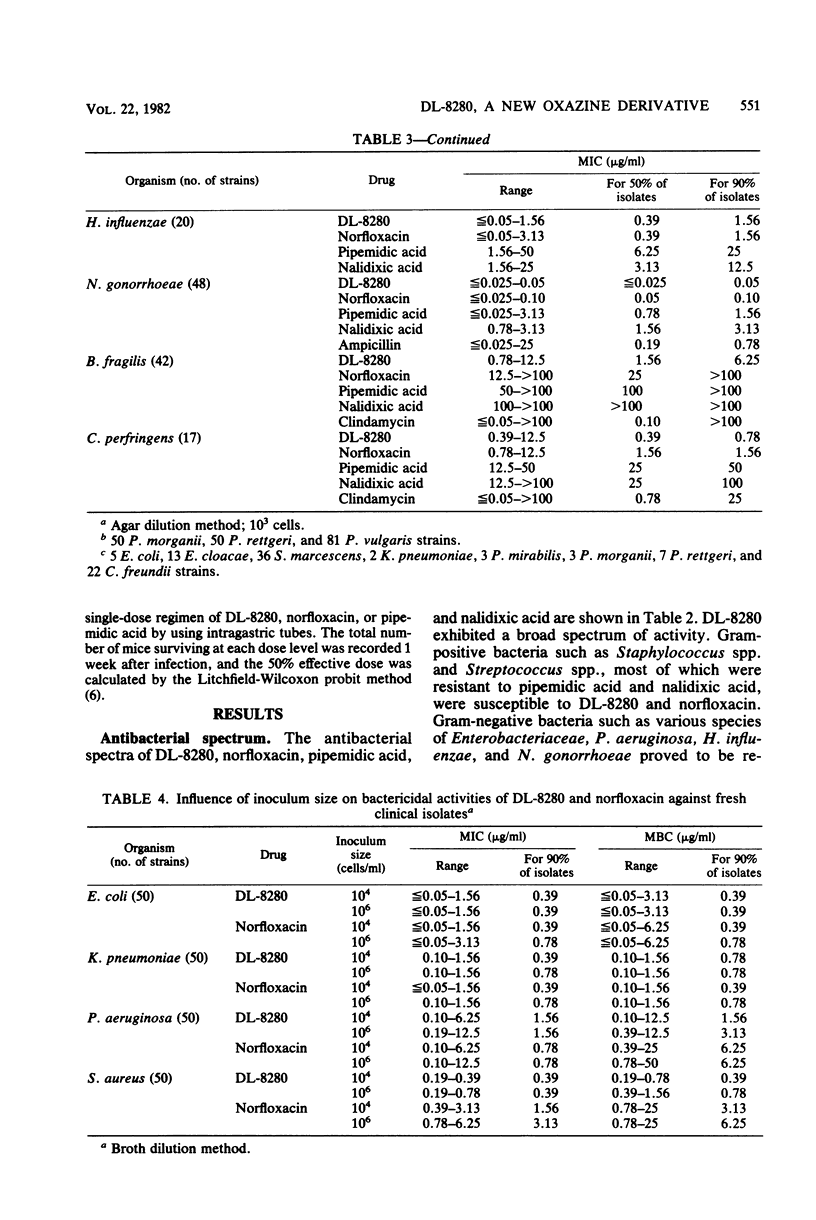
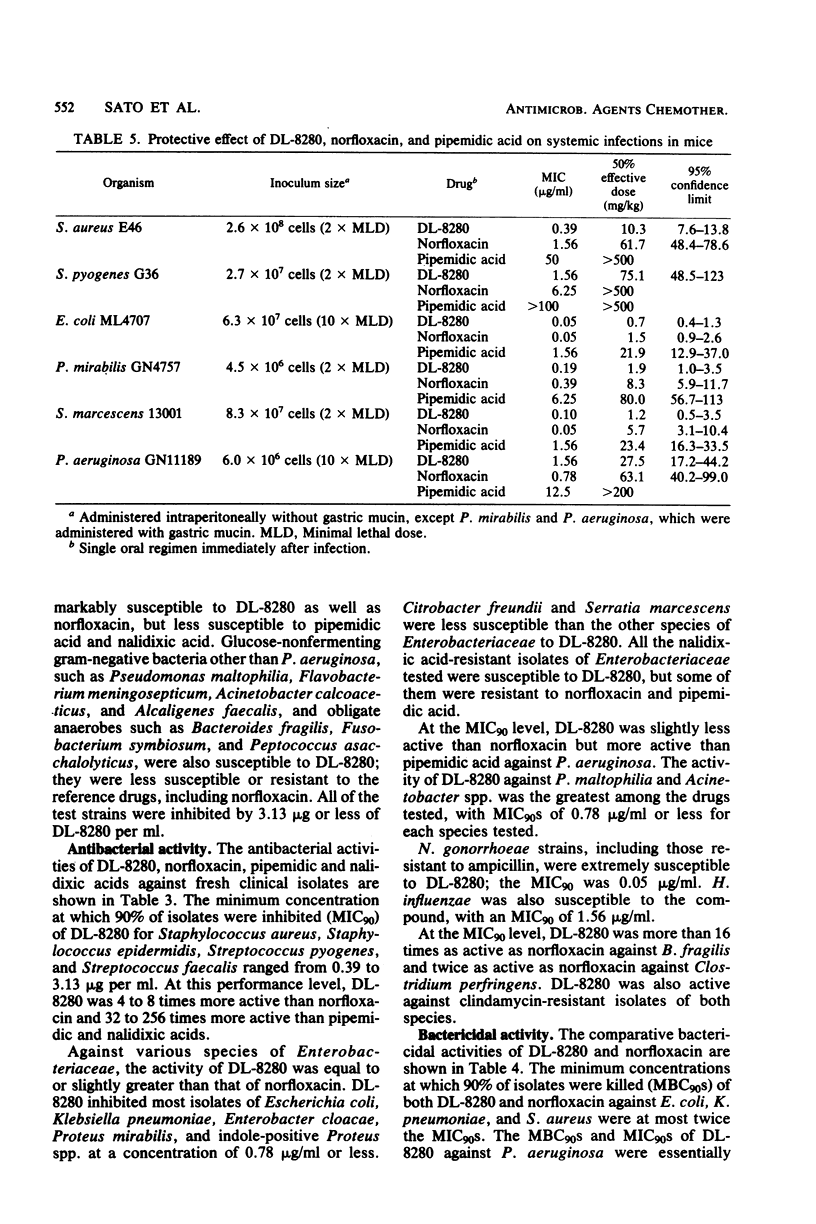
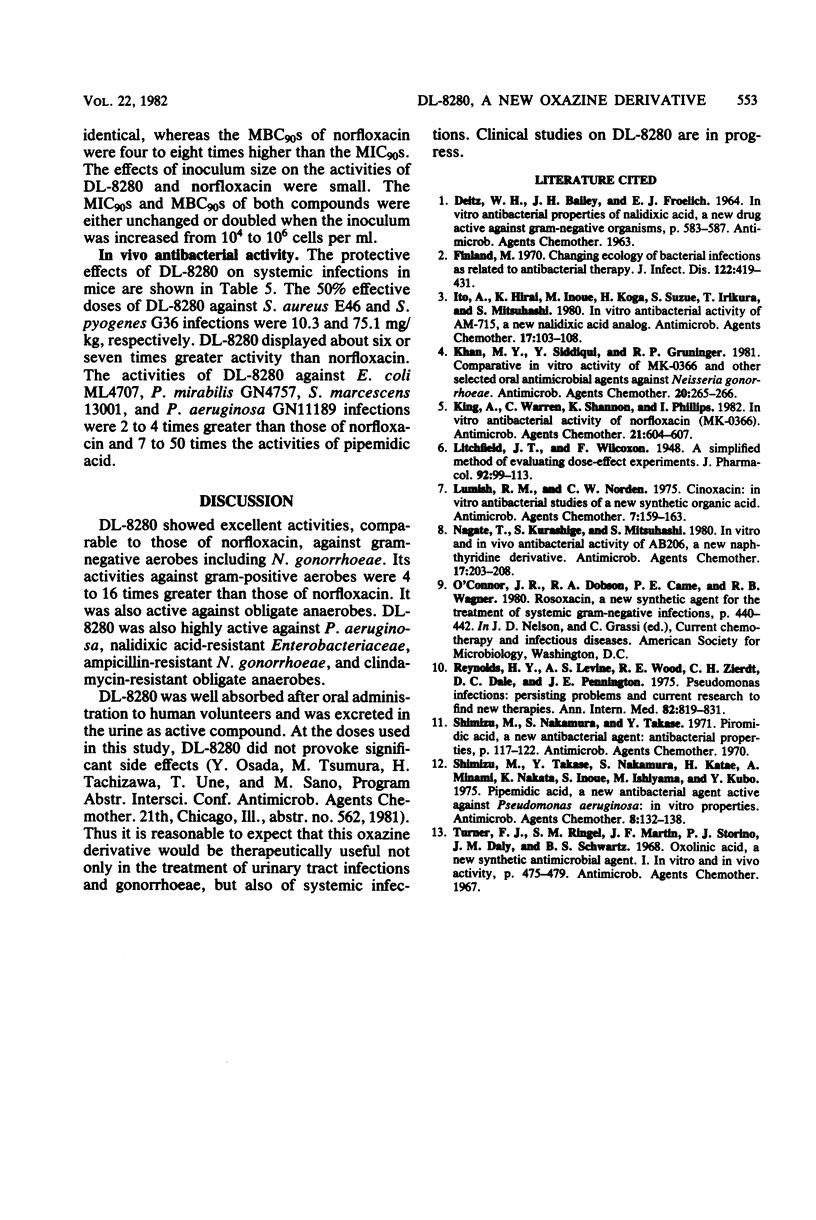
Selected References
These references are in PubMed. This may not be the complete list of references from this article.
- Finland M. Changing ecology of bacterial infections as related to antibacterial therapy. J Infect Dis. 1970 Nov;122(5):419–431. doi: 10.1093/infdis/122.5.419. [DOI] [PubMed] [Google Scholar]
- Ito A., Hirai K., Inoue M., Koga H., Suzue S., Irikura T., Mitsuhashi S. In vitro antibacterial activity of AM-715, a new nalidixic acid analog. Antimicrob Agents Chemother. 1980 Feb;17(2):103–108. doi: 10.1128/aac.17.2.103. [DOI] [PMC free article] [PubMed] [Google Scholar]
- Khan M. Y., Siddiqui Y., Gruninger R. P. Comparative in vitro activity of Mk-0366 and other selected oral antimicrobial agents against Neisseria gonorrhoeae. Antimicrob Agents Chemother. 1981 Aug;20(2):265–266. doi: 10.1128/aac.20.2.265. [DOI] [PMC free article] [PubMed] [Google Scholar]
- King A., Warren C., Shannon K., Phillips I. In vitro antibacterial activity of norfloxacin (MK-0366). Antimicrob Agents Chemother. 1982 Apr;21(4):604–607. doi: 10.1128/aac.21.4.604. [DOI] [PMC free article] [PubMed] [Google Scholar]
- Lumish R. M., Norden C. W. Cinoxacin: in vitro antibacterial studies of a new synthetic organic acid. Antimicrob Agents Chemother. 1975 Feb;7(2):159–163. doi: 10.1128/aac.7.2.159. [DOI] [PMC free article] [PubMed] [Google Scholar]
- Nagate T., Kurashige S., Mitsuhashi S. In vitro and in vivo antibacterial activity of AB206, a new naphthyridine derivative. Antimicrob Agents Chemother. 1980 Feb;17(2):203–208. doi: 10.1128/aac.17.2.203. [DOI] [PMC free article] [PubMed] [Google Scholar]
- Pseudomonas aeruginosa infections: persisting problems and current research to find new therapies. Ann Intern Med. 1975 Jun;82(6):819–831. doi: 10.7326/0003-4819-82-6-819. [DOI] [PubMed] [Google Scholar]
- Shimizu M., Takase Y., Nakamura S., Katae H., Minami A. Pipemidic acid, a new antibacterial agent active against Pseudomonas aeruginosa: in vitro properties. Antimicrob Agents Chemother. 1975 Aug;8(2):132–138. doi: 10.1128/aac.8.2.132. [DOI] [PMC free article] [PubMed] [Google Scholar]


